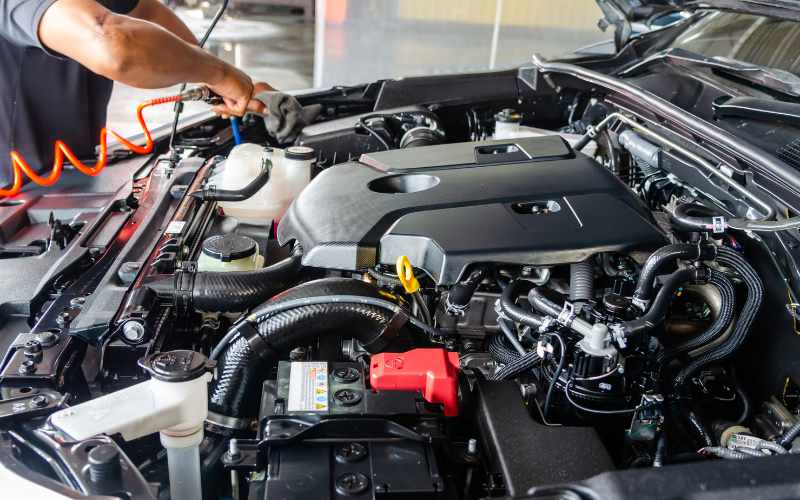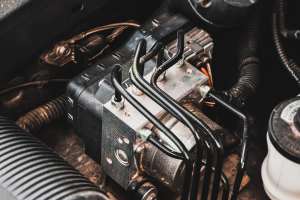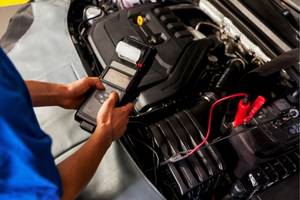Introduction
Are you scratching your head trying to understand more about your Toyota's ECM? Well, you've found the right place. In this guide, we'll break down everything you need to know about Toyota ECM repair and diagnosis, its common problems, how to diagnose these issues, and steps for repair and maintenance. Whether you're a DIY enthusiast or just want to be informed before heading to the mechanic, this guide will equip you with the knowledge to handle your Toyota's ECM confidently.
1. What is Toyota ECM?
Let's start at the beginning—what is the Toyota ECM? ECM stands for Engine Control Module. This is the brain of your Toyota, controlling a variety of your vehicle's functions such as fuel injection, ignition timing, and variable valve timing. In simpler terms, the ECM is like the puppet master, pulling the strings to ensure your Toyota runs smoothly and efficiently.
Understanding your Toyota's ECM is the first step in mastering Toyota ECM repair and diagnosis. The ECM is essentially a computer, receiving data from various sensors around your car. It then uses this data to control and adjust the engine, providing optimal performance and efficiency.
But what happens when the puppet master encounters problems? More on this in the following sections, where we'll explore common Toyota ECM issues, how to diagnose them, and steps for repair. After all, a well-maintained ECM can make a significant difference in the performance and longevity of your Toyota.
2. Common Toyota ECM Problems
Now that we've covered what the Toyota ECM is, let's move on to some of the issues that can crop up. Yes, even the brain of your Toyota isn't immune to problems. These issues can range from minor annoyances to major headaches, but being aware of them is half the battle in Toyota ECM repair and diagnosis.
Unusual Engine Behavior
One of the most noticeable symptoms of a potential ECM problem is unusual engine behavior. This could manifest as difficulty starting your car, poor fuel efficiency, or even random engine misfires. If your Toyota is acting more like a rebellious teenager than a well-oiled machine, it could be an issue with the ECM.
Warning Lights
Your Toyota's dashboard lights aren't just there for decoration. They provide important information about your vehicle's health. If your check engine light or another warning light is on and you can't identify a clear reason, it could signal an ECM problem. Remember, the ECM is like the puppet master—so, if it's not working correctly, it can send some mixed signals.
Transmission Issues
ECM problems can also lead to transmission issues. If you notice your Toyota is having difficulty shifting gears or if the vehicle is not going into gear at all, it could be a sign of an ECM issue. Remember, the ECM controls many aspects of your vehicle's performance, including the transmission.
Identifying these common problems is the first step in effective Toyota ECM repair and diagnosis. In the next section, we'll dig deeper into how to diagnose these ECM issues. So, stay tuned!
3. How to Diagnose Toyota ECM Issues
After identifying potential ECM problems, the next logical step is diagnosis. Like a detective on the trail, you need to gather evidence and draw conclusions. But don't worry—you don't need to be Sherlock Holmes to conduct Toyota ECM repair and diagnosis. Just follow the steps below.
Use an OBD2 Scanner
With technology on your side, diagnosing ECM issues can be a breeze. An OBD2 scanner is a handy tool that can read trouble codes from your vehicle's onboard computer. Simply connect the scanner to the OBD2 port in your Toyota —usually located under the dashboard— and let it do its magic. The scanner will then display error codes that relate to the specific issues your vehicle is facing.
Sometimes, the old-fashioned way is the best way. Keep a close eye on your vehicle's performance. Is it stalling or misfiring? Are the RPMs fluctuating? These could be indications of an ECM issue. Noticing these early signs could save you from a bigger headache down the road.
Visit a Professional Mechanic
When in doubt, turn to a professional. If you're struggling to identify the problem or the issue persists after your own attempts at diagnosis, it might be time to visit a mechanic. A professional mechanic has the tools and knowledge necessary for accurate Toyota ECM repair and diagnosis.
In the next section, we'll delve into how to repair a faulty Toyota ECM. Buckle up, because we're about to get our hands dirty!

4. Steps to Repair Toyota ECM
Once you've diagnosed the problem, it's time for the next stage in our Toyota ECM repair and diagnosis journey: the repair process itself. Let's get down to business.
Reset the ECM
Sometimes, all your ECM needs is a good old reset. It's like giving your computer a reboot when it starts acting up. To do this, disconnect the negative battery cable from your Toyota’s battery. Wait for about 30 minutes, then reconnect it. This simple step can sometimes clear any error codes and reset the ECM, fixing the problem.
Replace Faulty Sensors
If resetting didn't solve the issue, your problem might be a faulty sensor. Sensors are the eyes and ears of your ECM, and if they fail, it can cause all sorts of problems. If your OBD2 scanner or mechanic identified a faulty sensor, you'll need to replace it. This is a task you can do yourself, or you can hire a professional if you're not comfortable with it.
Re-Flash or Replace the ECM
In some cases, the ECM itself might be the culprit. If it's not functioning as it should, you might need to re-flash it. This means updating the software that runs on your ECM — kind of like updating your smartphone's operating system.
If re-flashing doesn't work, the ECM may need to be replaced entirely. This is a more complex task that should be handled by a professional mechanic.
Remember, Toyota ECM repair and diagnosis can be a complex process, but with patience and a little know-how, you can tackle it head-on. In the final section, we'll discuss how to maintain your ECM to avoid future problems. Stay tuned!
5. Tips for Maintaining Toyota ECM
We've journeyed through Toyota ECM repair and diagnosis, but let's not forget: prevention is always better than cure. Here are some tips to help you keep your ECM in top shape.
Regular Servicing:
Don't underestimate the power of regular servicing. It keeps your Toyota running smoothly and helps identify potential issues before they become serious problems. During servicing, your mechanic can check the ECM, update its software, and ensure it's functioning as it should.
Keep it Clean:
Like any other part of your car, the ECM can collect dust and grime. Cleaning it regularly can prevent build-up that might interfere with its performance. But remember, it's an electronic component, so you'll want to use a product designed for cleaning electronics.
Protect Your ECM from Moisture:
Water and electronics don't mix well. If your ECM gets wet, it can cause serious damage. Protect your ECM by ensuring the ECM compartment is properly sealed against water and moisture.
Mind Your Battery:
A failing battery can send voltage spikes through your car's electrical system, which can damage your ECM. Regularly check your battery's health and replace it if necessary.
By practicing these preventative measures, you can help ensure your Toyota’s ECM stays in peak condition, reducing the need for Toyota ECM repair and diagnosis in the future. Remember, a bit of prevention today can save a lot of repair tomorrow. Happy motoring!
Conclusion
Understanding and maintaining your Toyota's ECM is important for its ideal performance and longevity of your vehicle. By recognizing common problems, diagnosing issues precisely, and following the appropriate repair steps, you can make sure your Toyota runs smoothly. Regular maintenance and taking preventative measures can save you from costly repairs down the road. Remember, a well-maintained ECM not only optimizes your car's performance but also provides peace of mind on every journey. Happy motoring!
FAQs on
Toyota ECM Repair and Diagnosis : Practical Guide
-
1. What is the Toyota ECM?
Ans.
The Toyota ECM, or Engine Control Module, is the vehicle's computer system that controls various important functions such as fuel injection, ignition timing, and variable valve timing. It makes sure your Toyota operates efficiently and smoothly.
-
2. What are common signs of a faulty ECM?
Ans.
Common signs of a faulty ECM include unusual engine behavior, warning lights on the dashboard, and transmission issues. These symptoms specify that the ECM may not be functioning properly.
-
3.How can I diagnose ECM issues in my Toyota?
Ans.
You can diagnose ECM issues using an OBD2 scanner to read trouble codes from the vehicle's onboard computer. Additionally, paying attention to your vehicle's performance and consulting a professional mechanic can help in precise diagnosis.
-
4. What are the steps to repair a faulty ECM?
Ans.
Steps to repair a faulty ECM include resetting the ECM, replacing faulty sensors, re-flashing the ECM, or replacing the ECM entirely. It's recommended to seek professional help for complicated repairs.
-
5. How can I maintain my Toyota's ECM to avoid issues?
Ans.
Regular servicing, keeping the ECM clean, protecting it from moisture, and maintaining your vehicle's battery are important steps to keep your ECM in top condition and prevent future problems.
-
6. When should I seek professional help for ECM issues?
Ans.
If you are unable to identify or repair the ECM issues on your own, or if the problem continues after your attempts, it's best to seek professional help from a qualified mechanic who has the necessary tools and expertise.



